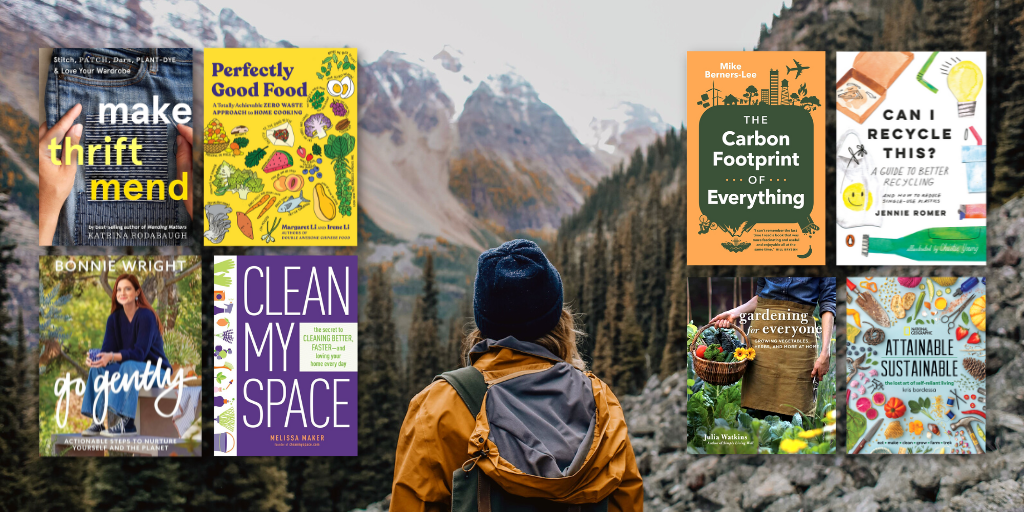Reducing Our Impact
In the spirit of this year's All Henrico Reads theme, “Conservation, Connection, and Compassion: Wellness and the Natural World,” we are considering our connection to the world and ways we can preserve its health for future generations.
The Library is continuing to implement more sustainable building designs and currently has five LEED certified locations. LEED (Leadership in Energy and Environmental Design) is an internationally recognized system that certifies buildings as green or sustainable. Buildings that meet LEED requirements save money and water, use fewer building materials, and consume less energy—all great things for us and the future of the planet! Read on to learn more about how the library is working to reduce its impact and for recommended reads about how you can do the same.
You’ll find several libraries on Henrico’s LEED certified buildings list. Here are some of our buildings’ green features:
- Fairfield: Energy-saving exterior and interior lighting. Sustainable building materials and newly installed solar panel roofing.
- Varina: Located along the Capital Trail and has extra bicycle storage for riders
- Libbie Mill: Landscaping is completely comprised of native plants and requires no irrigation
- Gayton: A repurposed building that uses 35% less energy than the original structure
- Glen Allen: Re-uses an existing building site and was constructed with locally sourced materials
COLLECTION
For those wishing to reduce their personal impact, the library has several resources to help you go green. The books below contain small, medium, and large ways to be kinder to the planet in your home, garden, and everyday habits.
- Go Gently by Bonnie Wright (also available on Hoopla) is a comprehensive guide to green up every aspect of your home, including how to reduce waste in your kitchen and conserve energy and water. Additionally, Wright suggests ways to become a force for conservation in your own community.
- Reduce your wardrobe waste with some simple mending tools and skills. Instead of throwing away that old sweater, try mending, patching, embroidering, or upcycling it. Mending Matters and Make Thrift Mend by Katrina Rodabaugh (also available on Hoopla) give you simple steps on how to keep old clothes out of the waste bin. You may be pleasantly surprised at how beautifully decorative a mending job can be!
- According to the Environmental Protection Agency, traditional cleaning products can contain chemicals associated with health and environmental concerns. Avoid potentially harmful chemicals and learn how to create your own green cleaning products with Clean My Space by Melissa Maker. Recipes contain inexpensive ingredients available at most grocery stores like baking soda, vinegar, dish detergent, and an optional essential oil or two, and only take a couple of minutes to concoct.
- According to the World Wildlife Fund, an estimated one third of purchased food goes into the trash, where it rots and produces atmosphere-harming methane gases. Perfectly Good Food by Margaret Li (also available on Hoopla) is a great blueprint for combating this waste. Find soup, stock, cake, syrup, and fritter recipes, as well as freezing instructions, to help keep those kitchen scraps out of the trash.
In addition to these, we recommend checking out:
- Attainable Sustainable: The Lost Art of Self-Reliant Living by Kris Bordessa
- Can I Recycle This? A Guide to Better Recycling and How to Reduce Single-Use Plastics by Jennie Romer
- The Carbon Footprint of Everything by Mike Berners-Lee (also available on Hoopla)
- Gardening for Everyone: Growing Vegetables, Herbs, and More at Home by Julia Watkins (also available on Hoopla)
- Messy Minimalism: Realistic Strategies for the Rest of Us by Rachelle Crawford (also available on Hoopla)
- Plant & Planet: Sustainable & Delicious Vegetarian Cooking for Real People by Goodful
There are also plenty of opportunities to connect with conservation efforts in the community. Check out local initiatives like Keep Henrico Beautiful, Henricopolis Water and Soil Conservation District, and Henrico’s Environmental Action Resource Team (HEART) to learn more about how you can get involved.
When you subscribe to the blog, we will send you an e-mail when there are new updates on the site so you wouldn't miss them.
